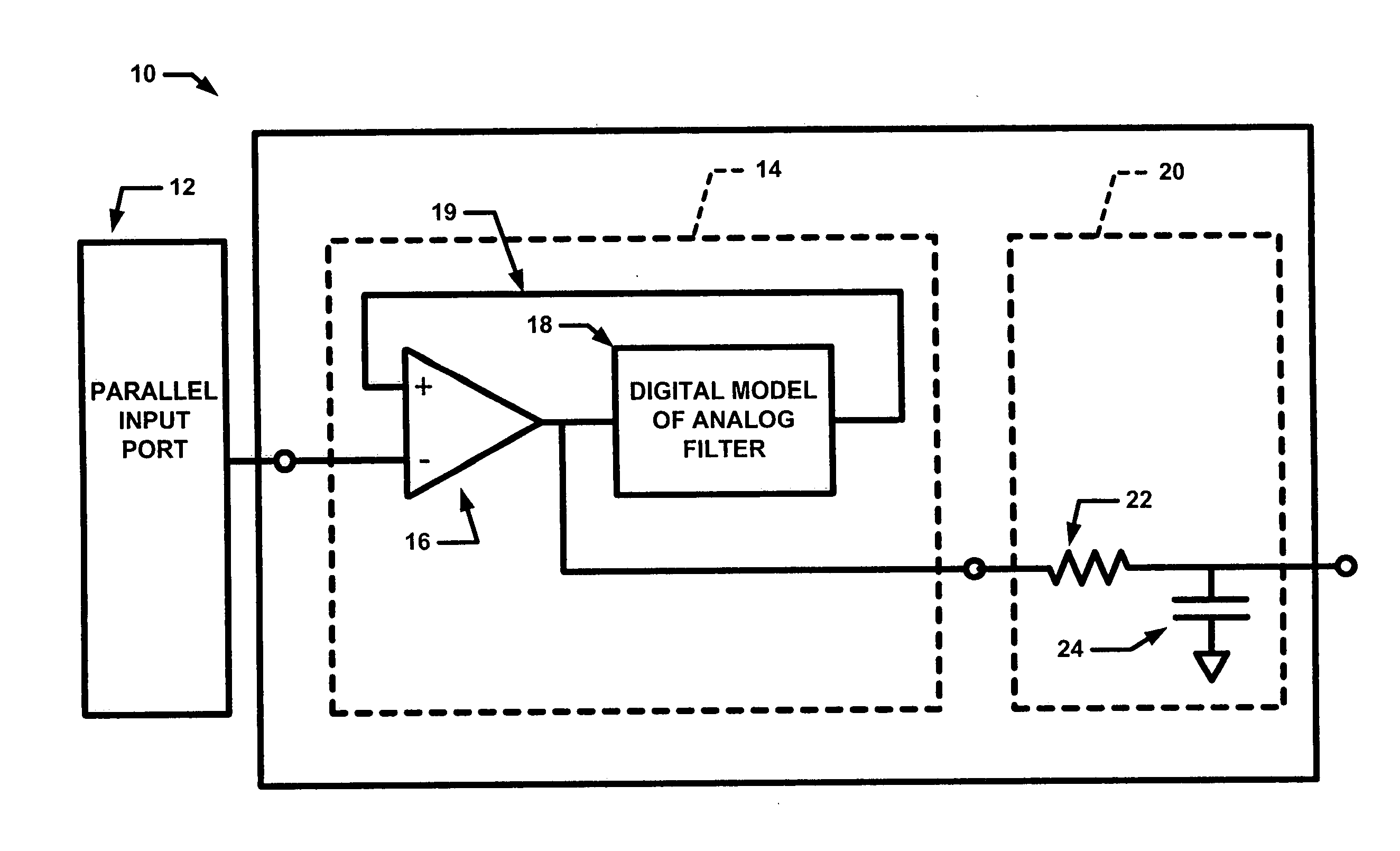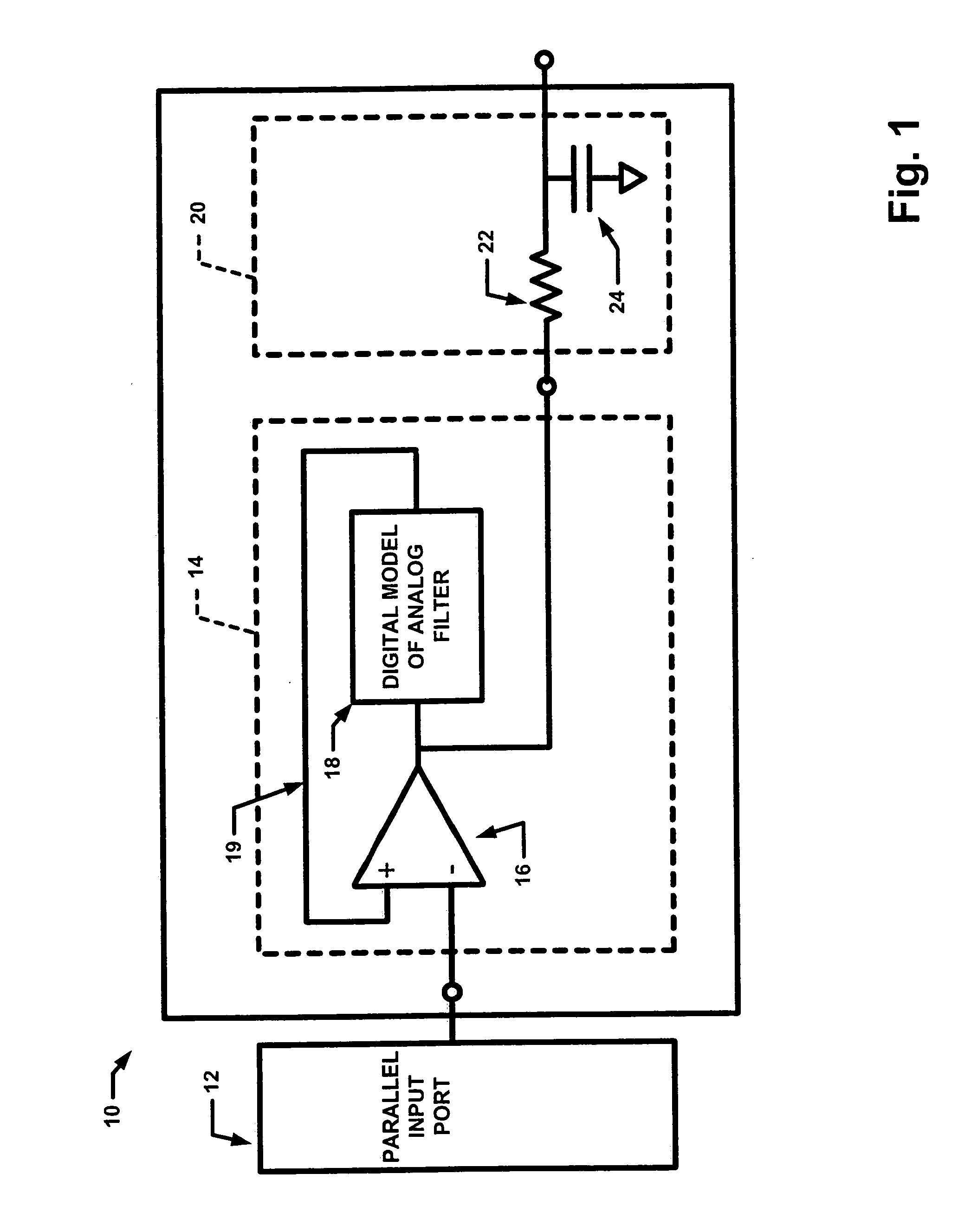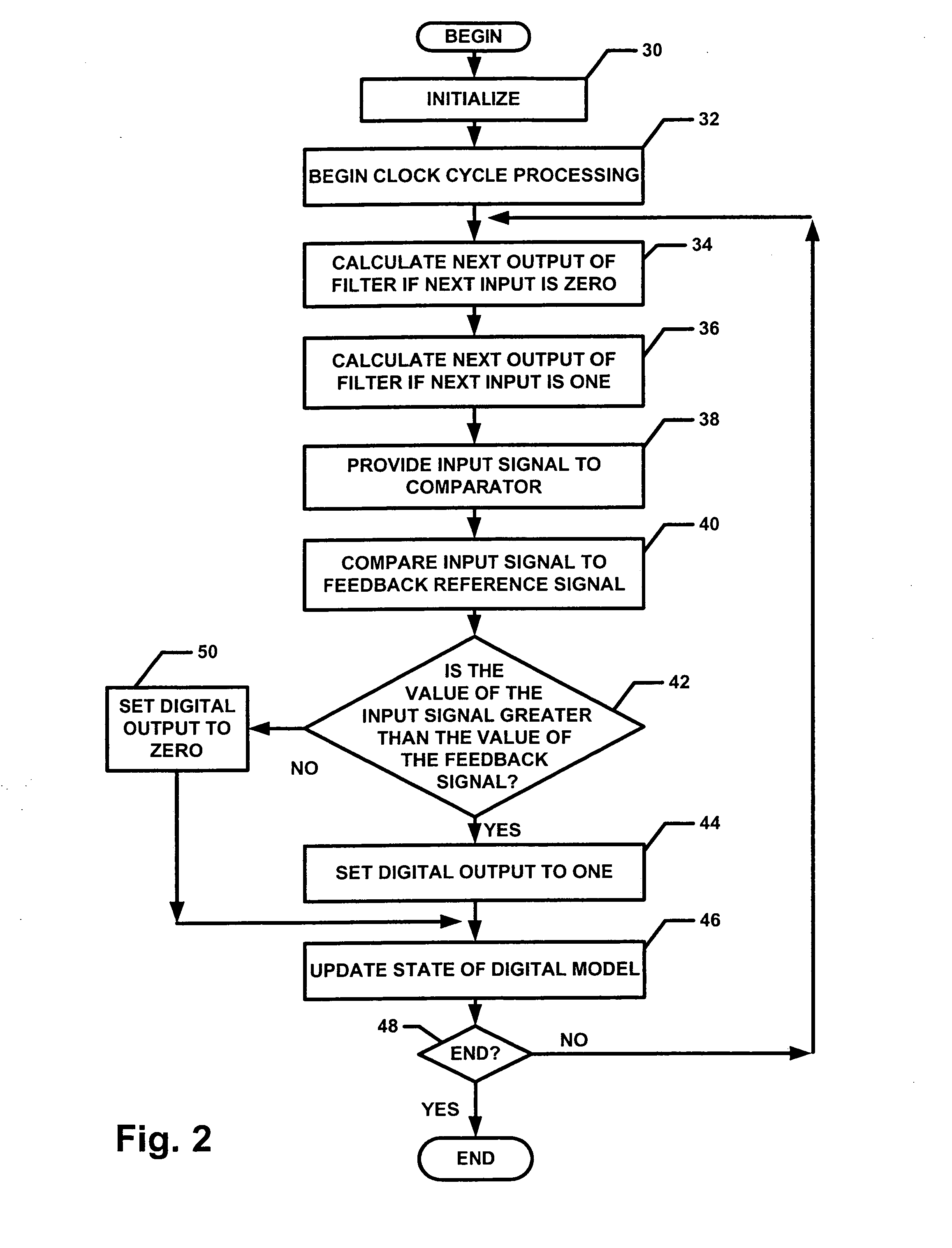Digital to analog converter
a digital to analog converter technology, applied in the field of radar systems, can solve the problems of low frequency of the converter, difficult filtering, and inability to provide a suitable level of accuracy for many applications, and achieve the effects of reducing noise, improving transient response, and reducing nois
- Summary
- Abstract
- Description
- Claims
- Application Information
AI Technical Summary
Benefits of technology
Problems solved by technology
Method used
Image
Examples
Embodiment Construction
[0016]Referring now to FIG. 1, a single bit digital-to-analog converter (DAC) 10 has an input port 10a, here provided as a parallel input port adapted to receive a digital input signal and an output port 10b at which an analog output signal is provided. The DAC 10 includes a digital processor 14.
[0017]The digital processor 14 includes one or more digital processing elements which may be implemented using a variety of different techniques including but not limited to as a plurality of logic gates, as an application specific integrated circuit (ASIC), as a field programmable gate array (FPGA) or as a microprocessor.
[0018]The digital processor 14 is programmed or otherwise provided to implement a comparator 16 and a filter 18 (also referred to herein as a “digital model of an analog filter” or more simply as a “digital filter” or a “digital implementation of a filter”). The phrase digital model of an analog filter, or any variant thereof, is intended to cover any discrete time model or...
PUM
 Login to View More
Login to View More Abstract
Description
Claims
Application Information
 Login to View More
Login to View More - R&D
- Intellectual Property
- Life Sciences
- Materials
- Tech Scout
- Unparalleled Data Quality
- Higher Quality Content
- 60% Fewer Hallucinations
Browse by: Latest US Patents, China's latest patents, Technical Efficacy Thesaurus, Application Domain, Technology Topic, Popular Technical Reports.
© 2025 PatSnap. All rights reserved.Legal|Privacy policy|Modern Slavery Act Transparency Statement|Sitemap|About US| Contact US: help@patsnap.com



